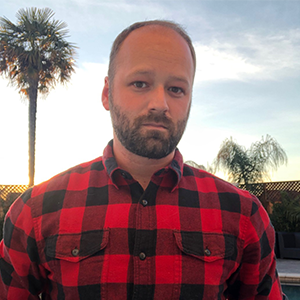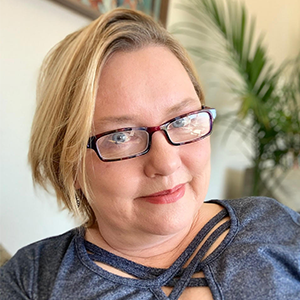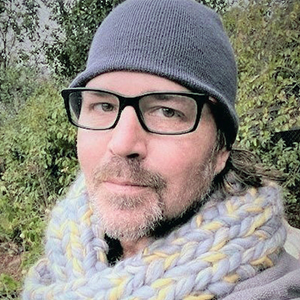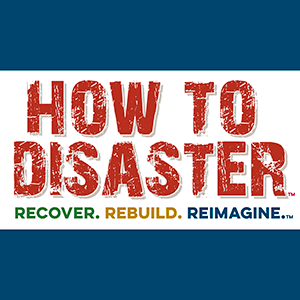Take 5- Fire Survivor Stories
“We cannot and should not let our community down and go through another wildfire and lose another life. That should be our mission. That should be our goal.” -Brad Sherwood
“Strong recovery comes down to people.” -Pamela Van Halsema
“You called me a second responder, I’d never heard that term before for an artist… It was just pouring out of me, I couldn’t keep up with myself. It was like the best problem I’ve ever had!
Welcome to the first episode of After the Fire Podcast Take 5 Series, where you get to hear the best of every episode in under 10 minutes!
Disasters happen when we least expect them. And often, we are left with very little time to take action. In these emergency situations, how we respond means the difference between life and death for us and someone else. Every second counts! But sometimes, we tend to panic and let our fear get the best of us. When everything is on the line, how do we maintain our composure? And most importantly, how can we manage to keep calm and lead others out of a disaster while also mourning our loss and healing ourselves? Let’s hear from our guests, Co-Founder of Larkfield Resilience Fund Brad Sherwood, Coffey Strong Board Member Pamela Van Halsema, and second-responder artist Peter Alan.
Highlights:
- 01:34: S1 Ep5: How to Advocate the Local and State Level with Brad Sherwood
- 04:09: S1 Ep4: How to Block Captain in Suburban and Urban Areas with Pamela Van Halsema
- 07:06: S1 Ep15: How to Heal Through Art with Peter Alan
Quotes:
01:00: “Sometimes, where you’re at is you only have five minutes.” -Jennifer Thompson
03:05: “We’re going to rebuild and we’re going to make this community better and stronger, not just for ourselves but for our future generations. But it takes leadership, and someone has to step up.” -Brad Sherwood
03:53: “We cannot and should not let our community down and go through another wildfire and lose another life. That should be our mission. That should be our goal.” -Brad Sherwood
06:00: “Strong recovery comes down to people.” -Pamela Van Halsema
08:59: “You called me a second responder, I’d never heard that term before for an artist… It was just pouring out of me, I couldn’t keep up with myself. It was like the best problem I’ve ever had! – Peter Alan
Meet Brad:
 Brad Sherwood and his family have resided in Larkfield Estates since 2013. Professionally, Brad manages the community and government affairs division at Sonoma Water, formerly known as the Sonoma County Water Agency. As a community advocate, Brad serves as a trustee on the Mark West Union School District Board of Trustees and is a member of the Mark West Citizen Advisory Council. Brad brings his public policy, communications, and government relations experience to the Board of Directors of the Larkfield Resilience Fund.
Brad Sherwood and his family have resided in Larkfield Estates since 2013. Professionally, Brad manages the community and government affairs division at Sonoma Water, formerly known as the Sonoma County Water Agency. As a community advocate, Brad serves as a trustee on the Mark West Union School District Board of Trustees and is a member of the Mark West Citizen Advisory Council. Brad brings his public policy, communications, and government relations experience to the Board of Directors of the Larkfield Resilience Fund.
Connect with Larkfield Resilience Fund:
Meet Pamela:
 Pamela Van Halsema has lived in Coffey Park with her husband since 2001 and raised three children in the neighborhood. Pamela is an educator and librarian who values getting involved with community work, including advocacy for children and families and issues around equity, human rights, and the environment. Pamela serves on the Community Services Advisory Board, is a participant in the Leadership Institute for Just and Resilient Communities, is on the Housing for All project for Santa Rosa Together, and serves on the Sonoma County Resilience Collaborative steering committee. For Coffey Strong, she is helping people navigate the landscape planning and permitting process in the rebuild.
Pamela Van Halsema has lived in Coffey Park with her husband since 2001 and raised three children in the neighborhood. Pamela is an educator and librarian who values getting involved with community work, including advocacy for children and families and issues around equity, human rights, and the environment. Pamela serves on the Community Services Advisory Board, is a participant in the Leadership Institute for Just and Resilient Communities, is on the Housing for All project for Santa Rosa Together, and serves on the Sonoma County Resilience Collaborative steering committee. For Coffey Strong, she is helping people navigate the landscape planning and permitting process in the rebuild.
Connect With Coffey Strong:
Meet Peter:
 Visual/conceptual mixed-media artist Peter Alan was born and raised in Southern California. After earning a Certificate Degree in Graphic Design, UC Irvine, then completing his undergrad at Sonoma State University in Studio Fine Art, History and Psychology, he spent 6 months in Assisi and Rome, Italy. There, Alan received mentorship from a local native Italian painter that ignited his career choice to make art professionally. Alan’s collective works on paper and panels range from Contemporary Realism, Abstraction and Responsive to Experimental, tinkering with any material art-makeable at reach. Since 1999, he has held a number of painting studios in California making art for galleries, non-gallery venues, and private collectors throughout Los Angeles and Sonoma County.
Visual/conceptual mixed-media artist Peter Alan was born and raised in Southern California. After earning a Certificate Degree in Graphic Design, UC Irvine, then completing his undergrad at Sonoma State University in Studio Fine Art, History and Psychology, he spent 6 months in Assisi and Rome, Italy. There, Alan received mentorship from a local native Italian painter that ignited his career choice to make art professionally. Alan’s collective works on paper and panels range from Contemporary Realism, Abstraction and Responsive to Experimental, tinkering with any material art-makeable at reach. Since 1999, he has held a number of painting studios in California making art for galleries, non-gallery venues, and private collectors throughout Los Angeles and Sonoma County.
Connect With Peter Alan:
Transcription:
Jennifer Gray Thompson: Welcome to Season 3 of the How to Disaster Podcast where we help you recover, rebuild and reimagine. During this season, we will be releasing Take 5 shorter episodes that highlight some of our past guests speaking about similar issues, themes, topics. We wanted to do this so that perhaps would be easier if you only have a few minutes, but you wanted to connect with these focused episodes and guests that you can condense all their messages into one smaller bite sized piece.
“Sometimes, where you’re at is you only have five minutes.” -Jennifer Thompson
One of the things that we know about disaster is that we really have to meet people where they’re at. And sometimes, where you’re at is you only have five minutes. We’re very excited for the third season. We’ve got great guests, and wonderful information, and content about how to actually help get your community through to the other side. So thank you for joining us. And if you wish to find out more, please visit our homepage at afterthefireusa.org. Consider giving us a like or follow if you like this podcast, we really appreciate it. And thank you for your time.
From Season 1, Episode 5: How to Advocate at the Local and State Level, Co-Founder and Vice President of the Larkfield Resilience Fund, Brad Sherwood.
“We’re going to rebuild and we’re going to make this community better and stronger, not just for ourselves but for our future generations. But it takes leadership, and someone has to step up.” -Brad Sherwood
Brad Sherwood: In 2017 on the night of the fire, we were lucky just to survive. We had no warning, no evacuation notice, and only had minutes to escape our home before the fire destroyed it along with thousands of others that night. Specifically that night, we pretty much ran out of the house with no shoes on. We were lucky to grab our pets on the way out, but we lost everything, and we were able to get our lives out, and that’s all that matters. We were fortunate that in our neighborhood, we did somewhat know each other. I mean, obviously, we’re not as close. We weren’t as close today as we are now. But in between the minutes that we had to evacuate from our home, I was able to go and run up down the street and knock on the doors of lots of our neighbors who are asleep in bed. So it was really at that point of knocking on doors, trying to get people out of their homes that I guess you can say my involvement in being a fire survivor started. Because I immediately realized that we’re going to rebuild and we’re going to make this community better and stronger. Not just for ourselves, but for our future generations. It takes leadership, and someone has to step up and say, let’s do this. This is what should be done.
“We cannot and should not let our community down and go through another wildfire and lose another life. That should be our mission. That should be our goal.” -Brad Sherwood
There’s the old adage, right, if you’re not at the table, you’re on it. And I would much rather be added, even if it’s with my own employer. I will leverage every relationship that I have to make this community more fire safe. It is every obligation I think of for every Sonoma County resident. We cannot and should not let our community down and go through another wildfire and lose them their life. That should be our mission. That should be our goal. And I don’t know who wouldn’t agree with that.
From Season 1, Episode 4: How to Block Captain in Suburban and Urban Areas, the Co-Founder of Coffee Strong, Pamela Van Halsema.
“Strong recovery comes down to people.” -Pamela Van Halsema
Pamela Van Halsema: Believe it or not, that weekend of the fire, I had just spent two days in Sacramento with my team of teachers from Petaluma at a workshop on how to help kids who have been through trauma. And so we had been helping trauma-informed care of children all weekend when literally, I came home, went to bed, dropped my stuff from the workshop, went to the bed and woke up at 2:00 AM with our neighborhood burning down. My Family was quick. We got up, my husband was the one who first woke up. We evacuated, we put on our emergency radio and heard that there was an evacuation center at one of our what’s called Finley Recreation Center near us and we went there.
A really strong recovery, I think ,comes down to people. And when you try to do things big, and those big town halls, they are really good. I mean, I listened to them, I got information from them, but there is no way that one official or two officials standing up there can really look every one of those people in the eye and help them. So having a system for sharing that load and having a volunteer who’s like, I’m going to take these 20 houses, and I’m going to really help those 20. And when they have issues or questions, I’m going to funnel that concern to our group. And then we’re going to also talk to the city, or the county, or whoever it is that really should be also aware of that problem or concern becomes a way that you’re heard, and you’re listening. And so it’s just not realistic that we can all be, I mean, some whoever shouting the loudest in one of those large meetings, there’s a place for those large meetings. So really, really important.
From Season 1, Episode 15: How to Heal Through Art, the local Sonoma County Mixed Media Artist, Peter Alan.
“You called me a second responder, I’d never heard that term before for an artist… It was just pouring out of me, I couldn’t keep up with myself. It was like the best problem I’ve ever had! – Peter Alan
Peter Alan: Get a call from my neighbor, Steven. He said: “You might want to look outside the window, there’s a very ominous orange glow, it’s kind of cool.” Nothing like, oh, my god, there’s a fire that looks like it’s about, maybe a couple few hundred yards away from us, and it’s coming in our direction. We should get the hell out here. No, he was more fascinated by it. He didn’t realize the magnitude of it because we couldn’t quite see because of all the trees. Never see anything like this. I had a few fires growing up down in Orange County where I was born and raised and grew up until I moved here, but I had witnessed fires advancing like three seconds, like a football field every three seconds. That one that I remember when I was very little is probably about seven years old. That took out a hill and just like seconds, I had no realization of the actuality of the fire other than I could see the orange glow. It was Steven and I and then one of our other neighbors was outside standing out there in the wind and brief coming everywhere. I could see the orange glow, it looked like it was, yeah, just beyond down kind of in the Trinity Dunbar and 12 area in there. And I could hear all the commotion. I could hear the fire department, could hear people yelling, and then I started hearing the big booms because a lot of people have these large propane tanks. So those are exploding or cars. And so what actually had me leave was the power went out.
Well, you called me a second responder, I’d never heard that term before for an artist. I’ve long thought about that pretty on a deep level of what that looks like, how that consists. Yeah, the fact that I was there to cry over the loss of my property where it turned into something else. It was a middle of them bailing, it was this birthing, the phoenix rising of insight and inspiration. And not just hope, but like a real direction. I could see what it was actually going to look like. I knew I was going to the flags, and so when I was going through the debris, I was looking to see will that fit that art. I was so clear, and very excited, and a lot of energy, a lot of drive. I have had more drive from out of this series from that incident than I have drawing a portrait of a beautiful woman or landscape, beautiful landscape. I just felt so driven for so many months there, and it was just pouring out of me. I mean, I couldn’t keep up with myself. It was like my best problem I’ve ever had.
Jennifer Gray Thompson: Thank you for joining us on the podcast, How to Disaster. For more information, please visit our website at afterthefireusa.org. And if you liked this video, please hit subscribe.

